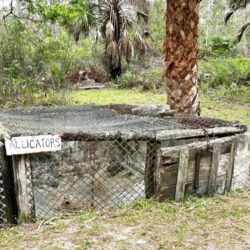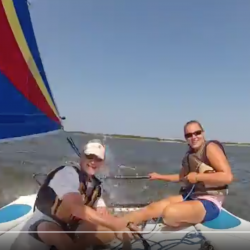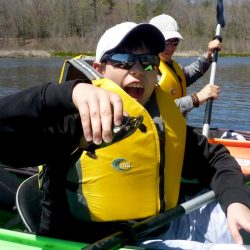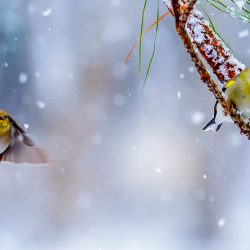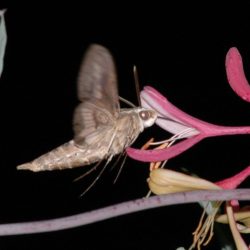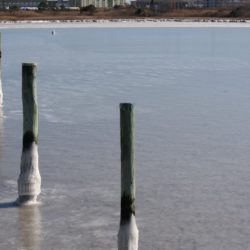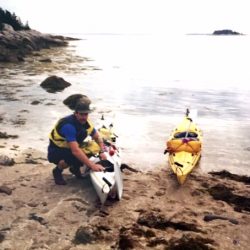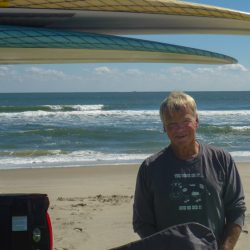Wild & Scenic Loxahatchee – Trip Report
I’d read that the Loxahatchee River was best suited for intermediate paddlers in nine to fourteen foot kayaks because of the narrow, twisty nature of the river. The reports also said that many people, instead of trying to arrange a shuttle for a one-way trip, did out-and-back trips, meaning they’d be paddling against the current for half of the journey. I consider myself intermediate and, even though my kayak is sixteen feet, I felt pretty confident. Mitch had agreed to drop me off and pick me up. I’d be going with the current. It should be an easy trip. But as I flew downstream with the current, muscling around sharp curves, grabbing onto logs and branches to keep from getting pinned against deadfall or wedged between cypress knees, I thought two things: 1) I am
Read MoreIs Bigger Always Better? 4 Reasons Why You Should Learn to Sail on a Small Boat
Over 40 years ago, I learned to sail on a windsurfer—about as small as you can get in the realm of sailboats. Since then, I’ve sailed on nearly every size and style of sailboat up to a 52’ catamaran. Smaller boats are a lot more fun. And by far, they are the best option for learning to sail. Here’s why: More Responsive: I took an American Sailing Association certification class taught on a 32’ Beneteau. Its unresponsiveness shocked me. On a Hobie, you immediately feel and see the effect of the wind—the boat heels, the sail fills or begins to flap, the sheet line becomes taught, even the rudder gives you feedback as to how the boat is sailing. On larger boats, the skipper frequently glances up. That’s because the only way they can
Read More5 Reasons Southern Delaware is Perfect for Your Family Kayaking Adventure!
Maybe we’re a little biased, but we think our corner of Delaware is a spectacular place to paddle. It satisfies the nature-lovers, the birders, photographers, the I-just-need-some-peace-and-quiet-ers. But it is especially perfect for families. Here are five reasons: #1 Engaging Local Characters At first glance, kids back away from the creepy-looking critter. But once they learn that the Horseshoe Crab is older than dinosaurs and is completely harmless, they can’t resist its magnetic pull. Kids of all ages crowd around to touch, hold, and connect with this helmet shaped, dun-colored, nine-eyed, blue-blooded sea creature whose presence ensures the survival of so many other species (ours included!). Diamond-backed terrapins curiously poking their snouts above the water, Ospreys dive-bombing unsuspecting fish, Great Blue Herons scaring the bejesus out of you with prehistoric squawks—our local wildlife puts on
Read MoreA Wannabe Naturalist
I never liked science. Dissecting critters—gross. Learning scientific classifications—yawn. Memorizing the periodic table—Thirsty Thursday, anyone? So why would I want to become a naturalist? It probably started with A Sand County Almanac. Followed closely by Desert Solitaire. Most recently, Braiding Sweetgrass. Through words, these naturalist/authors opened my eyes. So although I worried I’d be expected to memorize the scientific names of plants and animals, and identify trees and shrubs at a glance, and tell the difference between a Sanderling and a Sandpiper, I signed up for the class. I wanted the tools to see what my heroes saw. I was excited to be in the inaugural Delaware Master Naturalist program. It started in March 2020—that dreaded Covid spring. We got one class in before the pandemic disrupted everything. In person classes ended, the field trips
Read MoreLove Bugs
We love to save the majestic ones—bald eagles, elephants, tigers; and the adorable ones—pandas, terrapins, monkeys; and the mysterious ones—sea turtles, owls, whales. But one of the biggest (and tiniest) heroes of our natural world is also, for most people, one of the hardest things to love—bugs. And that’s unfortunate, because right now bugs desperately need help. Yes, some insects sting and bite. But the vast majority just go about their business day in, day out, trying to ignore homo sapiens. And their “business” is essential to life on earth. Insects pollinate 87.5% of flowering plants. These plants become food for thousands of species of animals, including humans. According to the USDA Natural Resources Conservation Department, “… scientists estimate that one out of every three bites of food we eat exists because of animal pollinators like
Read MoreWinter Kayak Maintenance
In our household exists two opposite maintenance ideologies: Mitch believes in it and I don’t. That’s not exactly true. I think regular maintenance is great as long as someone else (Mitch) does it. The wonderful thing about kayaks, especially plastic ones, is that for most of the year they require little to no maintenance. No engines to flush, oil to change, wiper fluid to fill, or batteries to replace. However, it’s a good idea to pamper your kayak a little before tucking it in for its long winter nap, so it is happy and perky when it comes out of hibernation, ready for a summer of exploration. Drain and dry your kayak: Although our winters here in the mid-Atlantic are mild, inevitably we will have some sub-freezing nights and days. Any water left inside the
Read MoreHow We Know What We Know: Tidal Changes
Weather forecast, water temperature, air temperature, average tidal change—these are probably four of the most important factors when planning a kayak camping trip in an unfamiliar environment, especially for a trip off the coast of Maine in late September. For our first kayak camping trip (circa 1995) we carefully considered 3 of the 4 factors. We’d launched late in the day (see previous post) and didn’t have a route in mind. But we didn’t need to. Islands spread across the chart like freckles on the cheeks of a redhead. Our plan was to paddle until we found a hospitable-looking island, pull up, and camp. Unusually warm daytime temps mixed with seasonally cool waters had resulted in a light fog settling over us and the bay. A lobster boat, engine droning yet invisible in the fog,
Read MoreThe Hard Way: How we know what we know. Part 1—Dry bags
Circa 1995: We unloaded Mitch’s Sea Lion and my Scimitar from Mitch’s teal Ford Ranger, carried them close enough to the water that it was lapping at their bows, and set them down on the gently sloping, rock-strewn beach with sand the color of brown sugar. Next we unloaded all of our gear into mountainous piles on the pavement beside the pickup. Then we took our brand new roll of garbage bags (we’d sprung for the heavy-duty ones) and began bagging up our gear. In our excitement for our first kayak camping trip, two nights of island hopping off the Maine coast, we’d brought a ton of gear. We filled up bags, shoved them into bows and sterns, pulled them out, burped air bubbles, and jammed them back. More than an hour later, our hatches
Read MoreCongrats to Ms. B! Delaware STEM Teacher of the Year!
When Sarah Betlejewski isn’t guiding CK customers through the Delaware and Maryland salt marshes and cypress swamps, she is teaching science to 7th graders at Millsboro Middle School. Recently Sarah (known to her students as Ms. B) won the Delaware Middle School STEM Teacher of the Year Award. She received her award at the Delaware STEM Symposium on Oct. 8th. STEM stands for Science, Technology, Engineering, and Mathematics. According to Sarah, “STEM focuses on problem-based learning where you take a current, community-based problem and try to create solutions with technology or engineering.” Not resting with just one award, Sarah’s students are also state finalists for the Samsung Solve For Tomorrow award. Open to public middle and high schools nationwide, the goal for the contest is to integrate the student’s learning with community leader’s feedback to
Read MoreNeil Baker
The Coastal Kayak family lost a treasured member yesterday. Neil Baker passed away in his home after his nearly two-year battle with pancreatic cancer. I find it so hard to write these words because it was not Neil’s time yet. Neil and his wife, Patty, moved to Ocean City once Neil retired from Ohio State University as a Professor of Microbiology. He started guiding for Coastal Kayak in 2010 doing 5-9 tours per week, always willing to work doubles and pick up shifts when asked. His deep-seated instinct to teach and his eagerness to introduce participants to the natural world made his tours favorites with customers. He bought small, boxed-shaped microscopes to take with him on tours so that kids could get a close-up view of even the tiniest critters in the salt marsh. His
Read More
